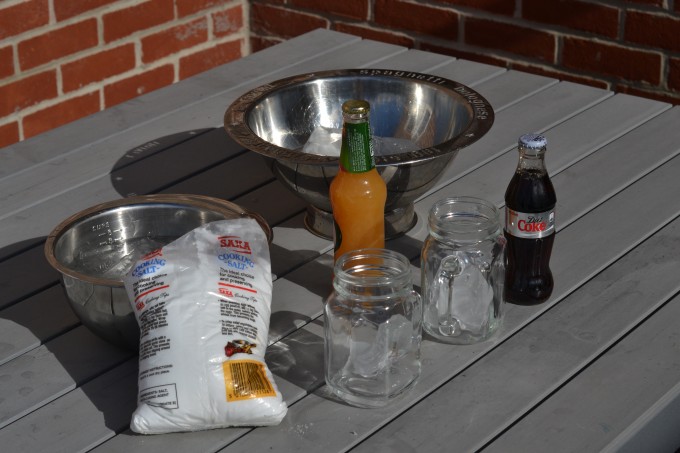How to cool a drink quickly
How can you get a cold drink when you don’t have any in the fridge?
Supercool it!
How to cool a drink quickly
What you need:
- A metal bowl
- Water
- Ice
- Drink in a glass bottle
- Salt
Method
- Half fill the bowl with water and ice.
- Place the bottle in the ice.
- Add a handful to salt to the water and stir.
- Watch what happens to the bowl and drink.
- The salt lowers the melting temperature of the ice, making the water temperature drop below zero, so cooling the drink super fast. We call this supercooling.
- Extension activitiesCan you design an experiment as a control condition? Maybe ice and water with no salt??Can you record the temperature before and after adding the salt?Does the temperature drop further if you add more salt?What happens if you use a plastic bottle? Does it work as well?If you use a smaller drinks container, does it cool faster?Note: If you use a can be careful when you open it!


Comments
Post a Comment